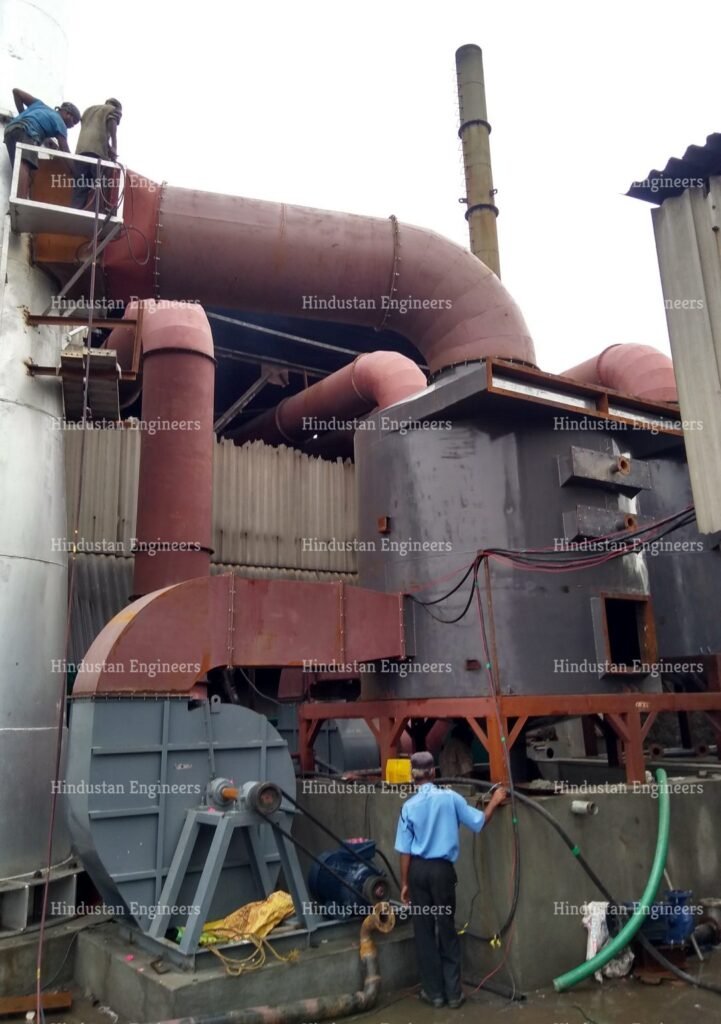A wet scrubber system is a type of air pollution control device used to remove harmful gases, particulates, and other pollutants from industrial exhaust streams. Here are key aspects of wet scrubber systems:
Working Principle:
A wet scrubber works by passing the polluted gas stream through a liquid (often water or a specific chemical solution) in order to capture and remove contaminants.
As the gas contacts the liquid, pollutants are absorbed, dissolved, or chemically reacted with the liquid, effectively scrubbing them from the gas stream.
The cleaned gas is then discharged, while the captured pollutants are collected in the liquid, which may undergo further treatment or disposal.
Types of Wet Scrubbers:
Venturi Scrubbers: Utilize a converging-diverging section to create a high-velocity gas stream that passes through a liquid spray, enhancing the contact between the gas and the scrubbing liquid.
Packed Bed Scrubbers: Employ a packing material (such as plastic or metal elements) to provide a large surface area for gas-liquid contact and pollutant absorption.
Spray Tower Scrubbers: Direct the gas stream upward through a chamber where the liquid is sprayed from the top to capture pollutants.
Cyclonic Scrubbers: Use a cyclonic chamber to create a vortex, allowing the gas stream and liquid to interact and separate pollutants from the gas.
Applications:
Wet scrubber systems are commonly used in various industrial processes, such as chemical production, metal smelting, oil refining, and power generation, where there is a need to control emissions of sulfur oxides, nitrogen oxides, particulates, volatile organic compounds (VOCs), and other pollutants.
They are often employed to comply with environmental regulations and air quality standards, as well as to protect worker health and safety.
Advantages:
Effective removal of both gaseous and particulate pollutants from gas streams.
Can handle high-temperature gas streams and a wide range of pollutants.
Versatile and customizable to meet specific pollutant removal requirements.
Can be designed for use with corrosive gases and harsh operating conditions.
Considerations:
Proper selection of the scrubbing liquid and system design is crucial to ensure efficient pollutant removal.
Maintenance and monitoring of the system, including the liquid recirculation and disposal processes, are important for consistent performance.
Operation of wet scrubber systems should comply with regulatory requirements and safety considerations.
Wet scrubber systems play a vital role in reducing air pollution and minimizing the environmental impact of industrial processes by effectively capturing and removing harmful pollutants from exhaust gases. Their versatility, efficiency, and adaptability make them a widely used air pollution control technology in various industries.

